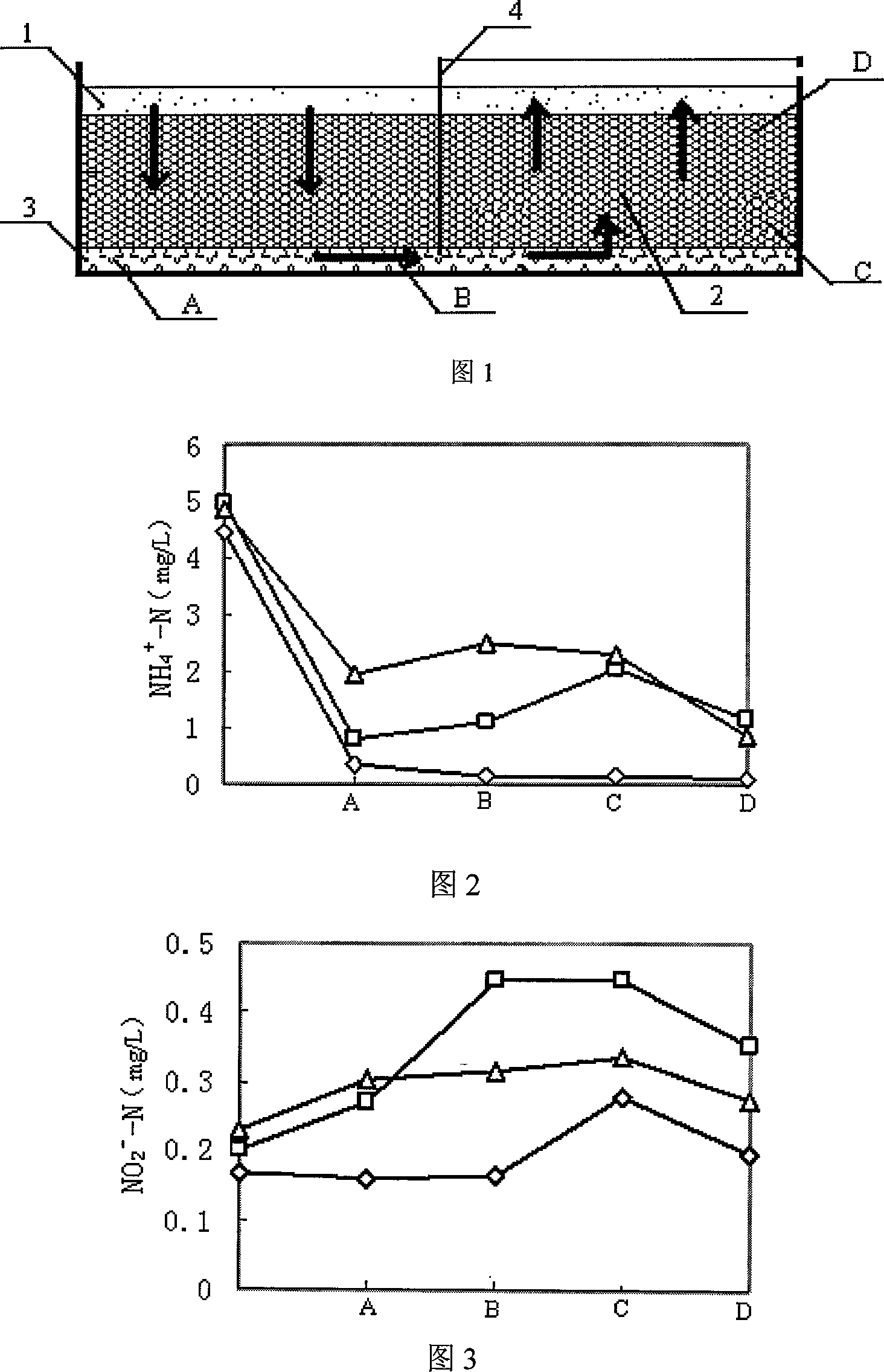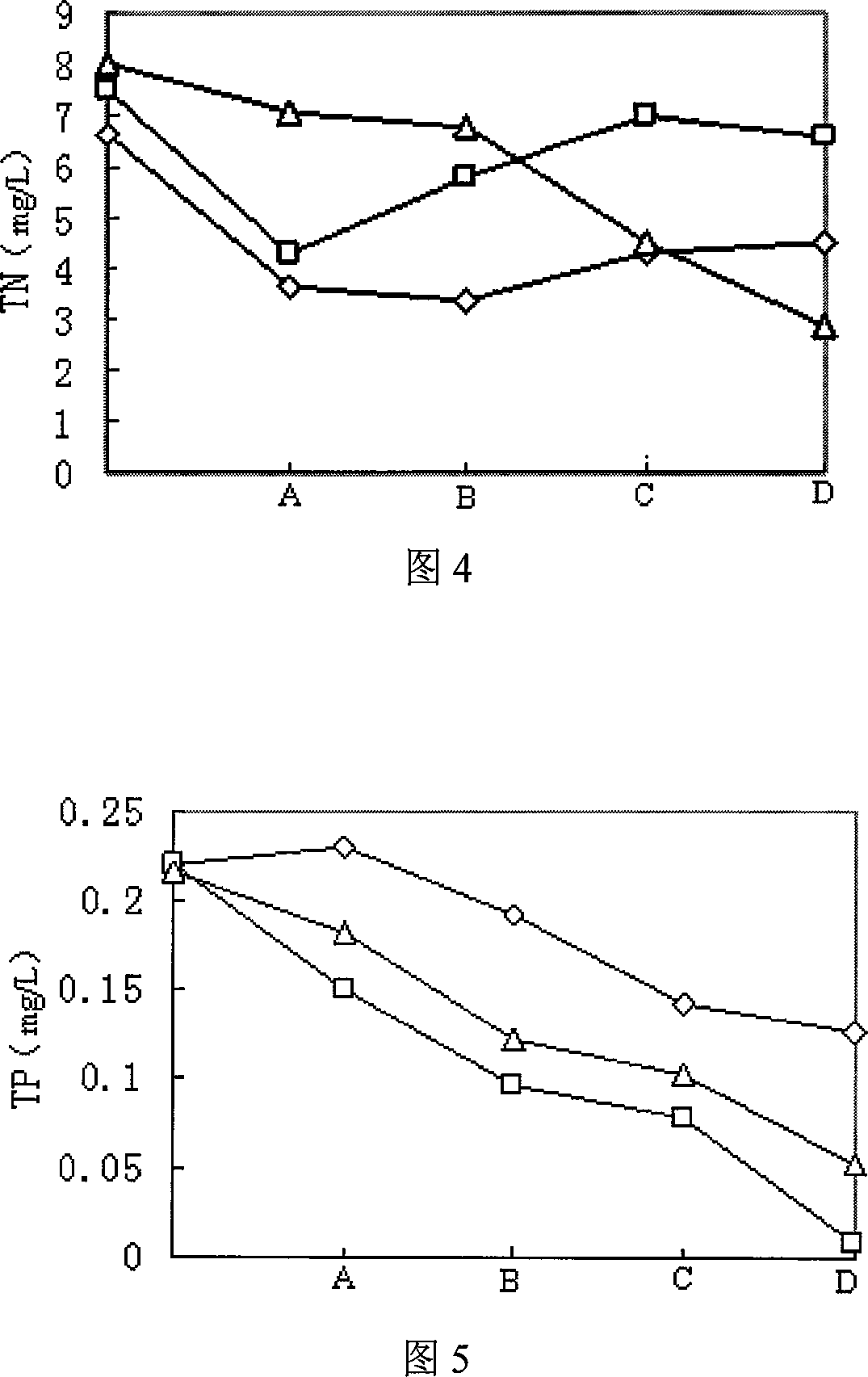Method for restoring landscape water body by organism reinforcement
A bioaugmentation and water body technology, applied in chemical instruments and methods, biological water/sewage treatment, water/sludge/sewage treatment, etc., can solve the problems of endogenous pollution, increase of other pollution loads of water bodies, and short maintenance time To achieve the effect of inhibiting the release of endogenous pollution, saving the cost of water body restoration, and fast decontamination speed
- Summary
- Abstract
- Description
- Claims
- Application Information
AI Technical Summary
Problems solved by technology
Method used
Image
Examples
specific Embodiment approach 1
[0008] Specific embodiment 1: In this embodiment, bio-intensive restoration of landscape water is carried out according to the following steps: a. Screening of functional bacteria: screening of nitrous acid oxidizing bacteria, ammonia oxidizing bacteria and phosphorus-accumulating bacteria from the polluted water body to be repaired; b. Domestication of functional bacteria : Nitrite oxidizing bacteria, ammonia oxidizing bacteria and phosphorus accumulating bacteria are cultivated with common beef extract peptone medium respectively, and then cultivated with domestication medium; Ammonia oxidizing bacteria and phosphorus accumulating bacteria were mixed according to the quantity ratio of 1:2:1 and expanded culture, and the number of mixed functional bacteria was 10 8 pieces / mL hang on the filter bed matrix; d. Purification: dynamic or static purification, water can be discharged; wherein the domestication medium in step b is to gradually replace the beef extract peptone medium w...
specific Embodiment approach 2
[0017] Specific embodiment two: this embodiment is described in conjunction with Fig. 1, and the difference between this embodiment and specific embodiment one is: in step c, the filter bed matrix is from top to bottom a sand layer 1 with a thickness of 4 to 5 cm, and a thickness of 25 to 27 cm. The zeolite layer 2 and the slag layer 3 with a thickness of 5-6 cm are composed, and a partition 4 is vertically arranged in the middle of the filter bed, and the partition 4 penetrates the sand layer 1 and the zeolite layer 2 . Other steps and parameters are the same as those in Embodiment 1.
[0018] The main components of slag are quartz, siderite, calcium oxide and calcite, which have strong adsorption properties for phosphate. The slag passivates and precipitates phosphate through chemical combination, so as to achieve the purpose of removing phosphate pollutants in landscape water.
[0019] Sand prevents bulky solid contaminants from clogging the filter bed.
[0020] The ave...
specific Embodiment approach 3
[0021] Specific embodiment three: the difference between this embodiment and specific embodiment two is: the particle diameter of sand in the step c is 0.5~1mm, and the particle diameter of slag is 5~10mm, and zeolite layer 2 is 2~4mm by particle diameter and 4-8mm monoclinic zeolite is mixed in a volume ratio of 1:1. Other steps and parameters are the same as those in Embodiment 2.
[0022] The zeolite in this embodiment is a monoclinic zeolite with a hardness of 3.5 to 4 and a specific gravity of 2.2. Since the zeolite used in this embodiment is made of SiO 2 and Al 2 o 3 Tetrahedral units are staggered to form a spatial network, and the crystal structure is open, so it contains many channels and cavities (3-11 Ȧ) with uneven sizes.
[0023] The zeolite in this embodiment has good thermal stability, acid resistance, dehydratability, electrical conductivity, catalytic cracking property of chemical reaction, radiation resistance and low bulk density, porosity and other cha...
PUM
| Property | Measurement | Unit |
|---|---|---|
| Density | aaaaa | aaaaa |
| Density | aaaaa | aaaaa |
| Density | aaaaa | aaaaa |
Abstract
Description
Claims
Application Information
 Login to view more
Login to view more - R&D Engineer
- R&D Manager
- IP Professional
- Industry Leading Data Capabilities
- Powerful AI technology
- Patent DNA Extraction
Browse by: Latest US Patents, China's latest patents, Technical Efficacy Thesaurus, Application Domain, Technology Topic.
© 2024 PatSnap. All rights reserved.Legal|Privacy policy|Modern Slavery Act Transparency Statement|Sitemap


